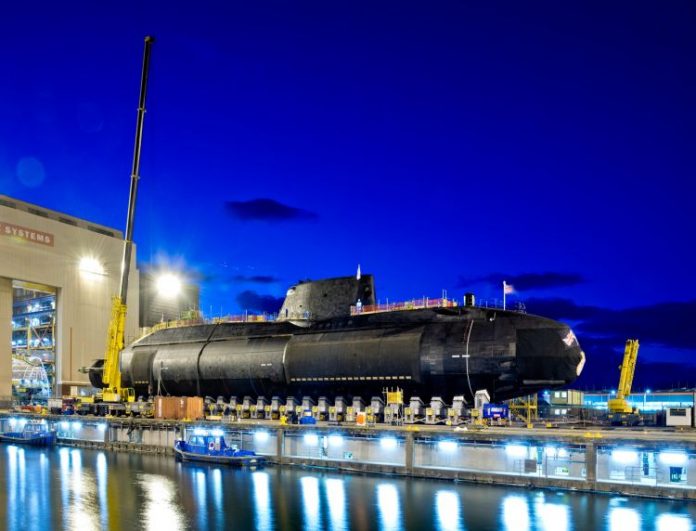
Shashank Joshi, defence editor at The Economist and a visiting senior fellow at the Department of War Studies, King’s College London, looks at five interesting aspects of the UK defence review that he says could be lost in the big picture. From The Strategist. The Australian Strategic Policy Institute.
First, and of great relevance to Australia, the review subtly changes how Britain thinks about the Indo-Pacific. It decrees that deployments beyond Europe should be used not for military diplomacy but ‘to retain deeper and broader “match fitness” … developing and demonstrating warfighting leadership’. What does that mean, for instance, for future deployments of British carrier strike groups?
The review also warns that expeditionary deployments might detract from homeland and European defence. To that end, it says, military forces ‘must be able to return at speed to the Euro-Atlantic if necessary.’ This language doesn’t reverse the Indo-Pacific tilt of the previous government, but it certainly qualifies it.
Second, the review describes China as ‘a sophisticated and persistent challenge’, rather than an adversary. The moderation is unsurprising: an audit of China policy is in its final stages, and a forthcoming national security strategy is likely to offer more detail. However, the review warns explicitly that Chinese missiles can now reach Britain and Europe. More importantly, and with the performance of Chinese weaponry in the recent India-Pakistan crisis in mind, the review notes that Britain is ‘likely to face Chinese technology wherever and with whomever it fights.’ That suggests that even if Britain’s armed forces do not benchmark themselves against China’s, they must keep its increasingly sophisticated hardware in mind.
Third, the review sets a clear priority for the armed forces. ‘Defence must contribute daily to deterrence in the Euro-Atlantic,’ it says, ‘with a force optimised for warfighting to protect and defend NATO territory and Allied populations against attack.’ That may sound obvious. But previous British reviews, in 2021 and 2023, put much more emphasis on activity short of war, such as influencing enemies in the so-called greyzone. Among the possible implications, presence-based missions, such as freedom of navigation operations, may be deprioritised in favour of more realistic training, and Britain could, for instance, conserve high-end munitions rather than expend them in counter-terrorism missions.
Fourth, the review sets out a more clear-eyed and hard-edged view of deterrence than what has come before. It says Britain needs escalation dominance, which requires it to ‘increase its options for threatening retaliation—whether developed nationally or with allies’. That could be a reference to long-range missiles that Britain is co-developing with Germany. The review promises that Britain will build up to 7,000 of them.
But perhaps most eye-catching is a separate call for Britain to spend on ‘both co-orbital and Earth-based’ anti-satellite weapons. British military chiefs have been warning about threats in space for many years but have always shied away from endorsing or avowing offensive capabilities of their own.
The question of escalation dominance and management relates to point five, on British nuclear posture. The review takes note of Russian nuclear modernisation and the collapse of arms control. It also observes that China’s growing stockpile and the possibility of Chinese collaboration with Russia could ‘place demands’ on US nuclear forces. To that end, it says Britain and NATO need ‘capabilities necessary to deter nuclear use at any scale’ and more ‘coherence between conventional and nuclear’ posture. This looks like code for: how to deter limited nuclear use, given that Russia has many more tactical nuclear weapons and that Britain has none at all?
The review makes a striking suggestion. It says that Britain should discuss ‘the potential benefits and feasibility of enhanced UK participation in NATO’s nuclear mission’. That is paired with a proposal that the Royal Air Force consider buying F-35As, which, unlike the F-35Bs that it already has, cannot fly from aircraft carriers but have longer range. F-35As could carry US B61 nuclear bombs. Public documents suggest that the base RAF Lakenheath has been upgraded so it can host B61s.
Critics would argue that this is not a great solution. Several countries in Europe already have aircraft that can carry these weapons. Moreover, the bombs remain under US custody, so they cannot hedge against an US abandonment of Europe. On the other hand, they might shore up deterrence at lower rungs of escalation.
‘Let’s say our F-35As are moved to the Indo-Pacific in a conflict and there’s a need for NATO to hold regional deterrence,’ I was told by one person familiar with US nuclear planning. ‘The presence of a British alternative is the most credible thing available.’ Operation of F-35As might also make it a little easier for Britain to develop and deploy a French-style sovereign air-launched nuclear weapon should it choose to go down that difficult and expensive route.
The great challenge of the review will be implementing it. Britain has committed only to spending 2.5 percent of GDP on defence by 2027. It may spend 3.0 percent by 2034, but that would be in the next parliament and only if financial circumstances allowed. On this spending trajectory, Britain cannot meet all its stated aims—the nuclear enterprise, AUKUS, an air combat development program and a recapitalised army capable of fielding two divisions. The review makes no hard trade-offs.



